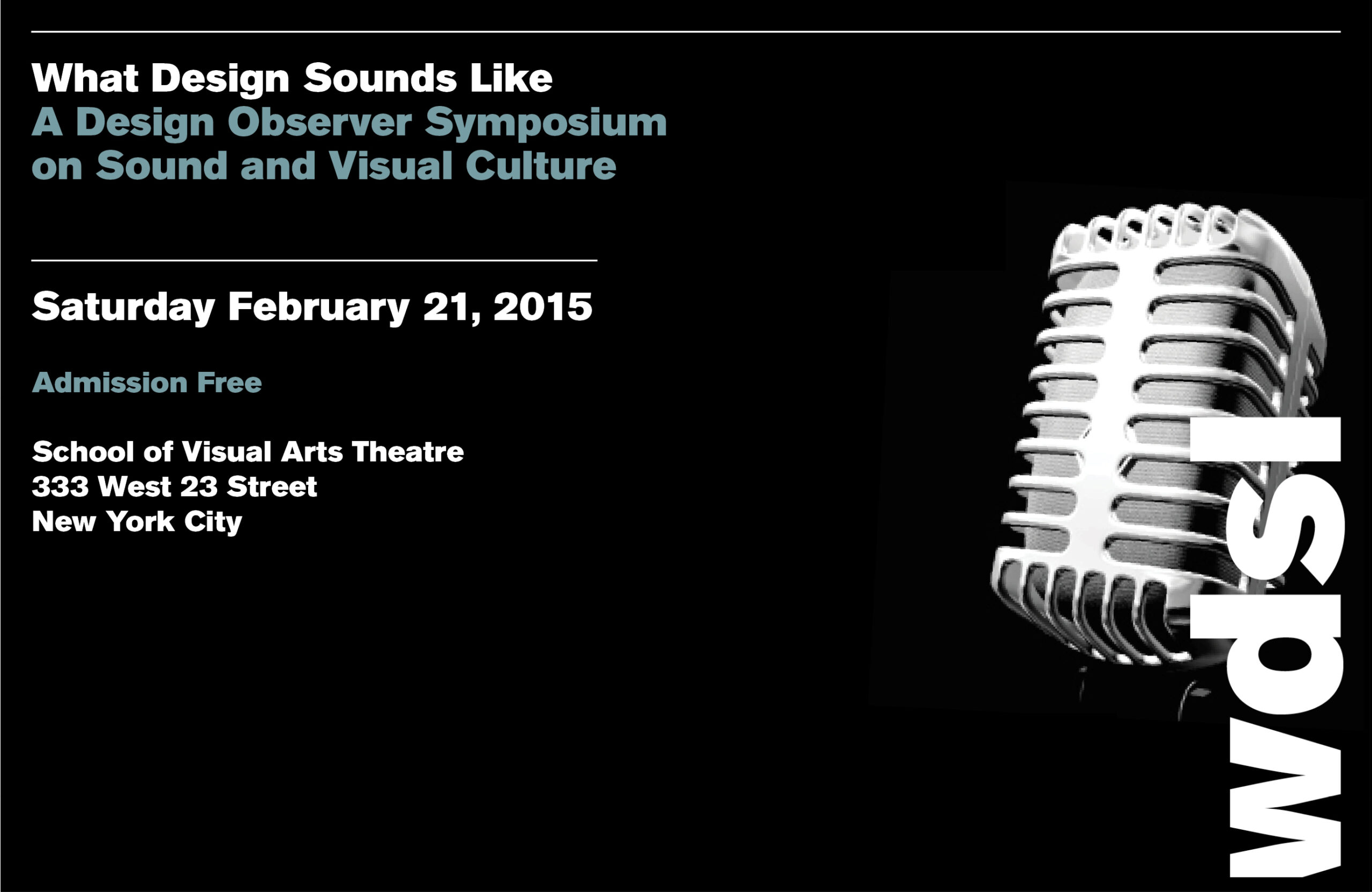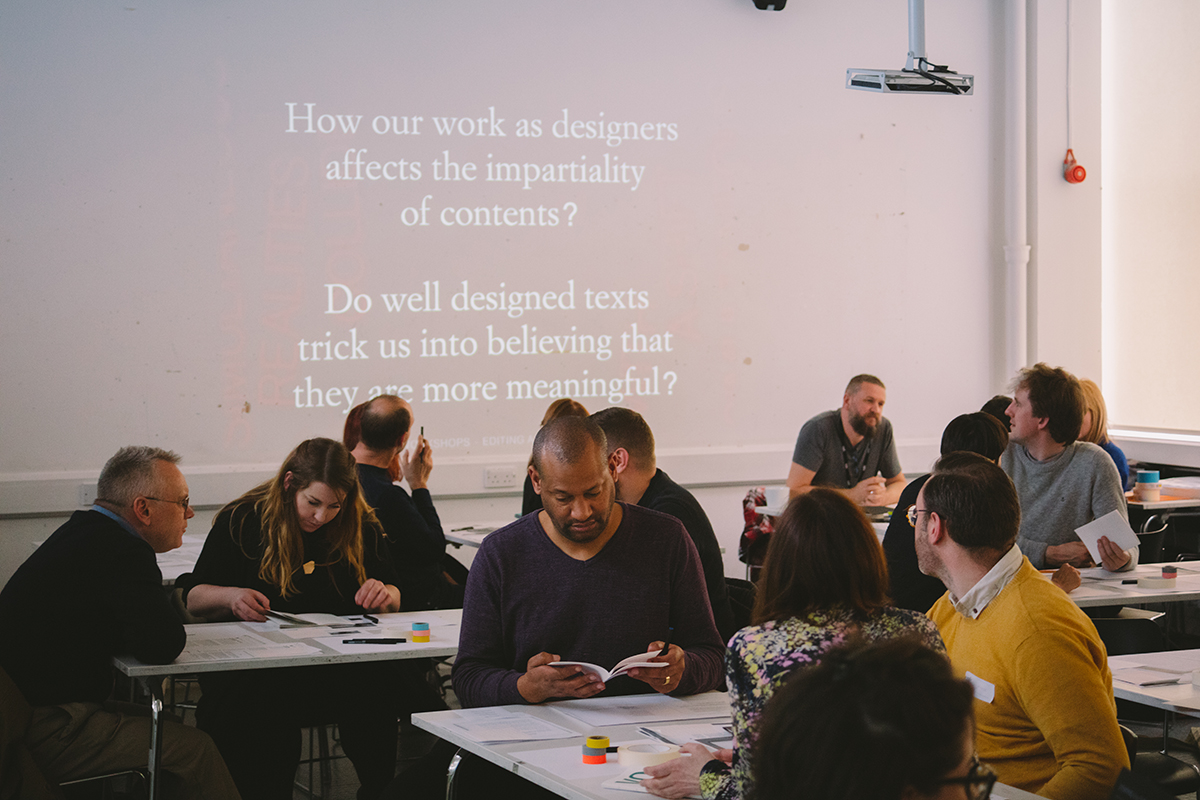
Katie Evans, Gabriela Matuszyk|Events
April 28, 2017
With a Shift Simultaneous Realities Collide
Writing as part of design discipline has been a topic that has come up quite a bit recently on Design Observer. We are excited to publish this review of an afternoon program exploring the intersection of design and writing at the London College of Comminucation, UAL. —The Editors
At the invitation of the Graphic Design Educators’ Network (GDEN), the MA Graphic Media Design course at London College of Communication, UAL curated and hosted With a Shift Simultaneous Realities Collide on the last Wednesday in March 2017. The afternoon event was organized by course leader and GDEN committee member Paul Bailey in collaboration with current full-time and part-time participants on the course. The event set out to explore the role of writing in/across/through design education and practice. The afternoon incorporated talks from Bryony Quinn, James Langdon and Professor John Wood; a series of workshops designed and delivered by MA Graphic Media Design participants; a special screening of a graphic design opera ‘No Exit’ from the Design Displacement Group; and a curated presentation of artefacts from the Archives and Special Collections at the London College of Communication, UAL. — The Authors
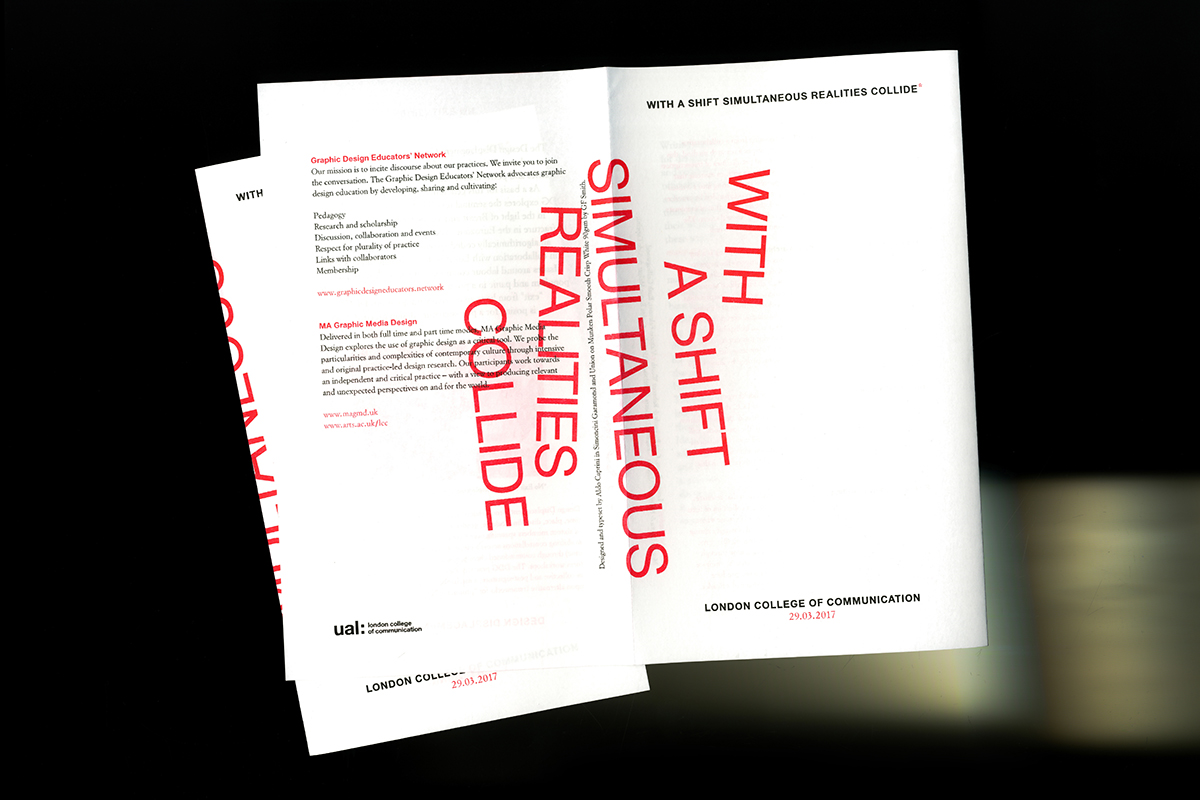
Program for With a Shift Simultaneous Realities Collide, March 29, 2017, London College of Communication. Design: Aldo Caprini.
In her 1976 New York Times Book Review essay ‘Why I Write’, writer, author, and editor Joan Didion provoked the impactful notion that setting words to paper gives one the power of invading the reader’s private space: “In many ways writing is the act of saying I, of imposing oneself upon other people, of saying listen to me, see it my way, change your mind.” Designers hope to stretch this statement, to use writing as a tool to listen to others and themselves, to see in multiple ways and through many fields, and to question and change their own minds, as well as the minds of others. With a Shift Simultaneous Realities Collide, offered up a brief moment to make such ‘shifts’ or ‘stretches’ in the practices of design and writing visible.
Bryony Quinn and John Wood both discussed the movements that occur in semiotics and semantics across centuries. In her talk “Meaning Shifting”, Quinn examined how meaning carries over, passes in-between, translates, tunnels-through, or moves between images and words. Quinn posited: If meaning has a distance to cover, or a threshold to pass through, is it real or imagined? For example Blisssymbolics is a universal pictographic language consisting of several hundreds symbols that build upon one another. It challenges the requirements of a typical western reader, who is bound to constructing words and meanings through linear use of the Roman alphabet.
Wood’s talk “A Machine for Saying Sorry”, focused on the importance of accountablilty for one’s use of language, particularly when facing issues of polarization and alienation. He spoke of the need for diversification, which can be accomplished through the invention of new words, so that our language expands to fit new phenomena rather than attempting to fit them into inaccurate modes of interpretation.
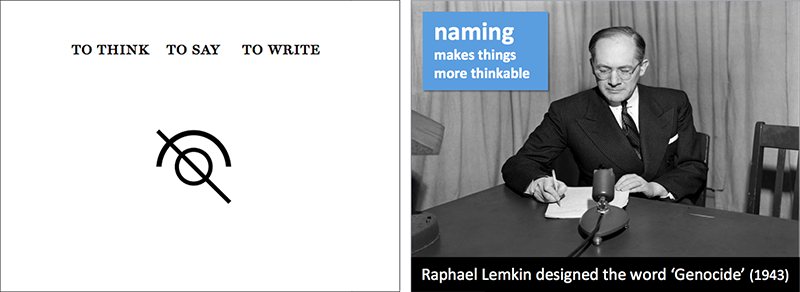
LEFT: Slide featuring Blissymbolics from Bryony Quinn’s presentation. RIGHT: Slide from John Wood’s presentation about the invention of new words.
With a mixture of relatable and unexpected analogies, James Langdon compared rock climbing approaches with Robert Rauschenberg’s Erased de Kooning Drawing, encouraging the audience to explore territories in research with authenticity, through writing and designing. In a similar way that an editor like Quinn takes a broad range of sources from a variety of fields and formulates a cohesive viewpoint or compelling argument, Langdon carefully considers all moveable parts within a project, using writing and designing throughout as tools for critique and reflection. As a case study he spoke of his current writings for English designer and educator Norman Potter’s biography, and the challenge—and necessity—of finding the ‘I’ as a personal perspective. In attempting to manage the weight of responsibility in writing someone else’s history, Langdon implements Potter’s commandment “to speak of artifacts only in their presence” as a strategy of writing with integrity. By holding, touching, and feeling the material—Potter’s collected printed ephemera and objects—Langdon avoids assumptions and in doing so challenges his own preconceptions.

LEFt: James Langdon talking about Norman Potter’s objects. Photo: Gabriela Matuszyk. RIGHT: Norman Potter’s Lexikon 80 Typewriter at Le Bouchage, France (2014). Photo: Stuart Whipps.
Notorious for ignoring the institution, Potter provoked questions on the role of forthrightness and equality, when honest feedback and constructive criticism is given from an educator to a student. We saw these very relationships manifest themselves and shift throughout the afternoon, as the participants ran a series of parallel workshops, challenging and interpreting different forms of writing within design research practices. Carlos Romo Melgar and Aldo Caprini, tested the role of designer-as-editor through a number of short exercises, all leading to the creation of a “Reader”. That workshop explored graphic interventions in the editorial process as a legitimate collaborative writing method, which can unveil intertextuality between the contributions of each author. Questions on impartiality were raised during the session, as despite attendees being encouraged to rip and deconstruct given texts, they requested scissors for a more accurate edit. Does the form shape the legitimacy of the written word? Is the aesthetic a reliable measure of authority?

Workshop attendees faced with questions on authority in ‘Editing as a way of writing’. Photo: Gabriela Matuszyk.
“How to kill a book” by Eugenia Luchetta and Héloïse d’Almeida, probed the issue of authority, or lack thereof, by presenting books deemed as damaged at the London College of Communication library. When studying the annotations made on marginalia in these “damaged” books, questions of legitimacy were raised. From one side, writing notes in publicly available books can be seen as a parasitic vandalism that challenges the validity of publications, suggests boredom, and prompts to alienation. The opposing view introduces the active writer—an individual who contributes to the narrative, shares their thoughts and observations, and simultaneously transforms into an author and collaborator. The fate of this library material, whether it is archived or continues its life in public circulation, determines if this collaboration thrives or dies. The selection of works in the display “From writer, to reader, to writer to archive” curated by Victoria Falconer, Ruth Collingwood, Monica Sajeva & Héloïse d’Almeida, immersed the viewers in LCC’s library archives and special collection materials. In pieces that were augmented, altered, and appropriated by anonymous figures, writing met reading, typeset met handwritten, and these ghost-like writers were celebrated.

An example of annotated/vandalized marginalia, “From writer, to reader, to writer, to archive”. Photo: Héloîse d’Almeida.
Louise Evans, Bec Worth and Cate Rickards illuminated the possibilities and peculiarities of transcription in their workshop “Original thoughts are prohibited”. The attendees were invited to engage in exercises of listening, writing, transcribing, and watching. At first they were encouraged to move around the space and stand beside their chosen definition of the transcriber [the transcriber is: invisible, a conduit, an interpreter, an editor, an author, and a negotiator]. This movement opened the floor to debate and provoked collisions on the notions of ‘truth’ and ‘neutrality’. Similar in spirit to Kenneth Goldsmith’s Uncreative Writing, the workshop gave a purposely playful, contemporary proposition of transcription as a creative tool / writing strategy, relevant in the context of appropriation. As both Goldsmith and Potter show, in order to provoke and challenge traditional methodologies, teaching can at times be a “performance”. After running their workshops, MA Graphic Media Design participants reflected on this, and noted the need for planning and intention, yet also the need for flexibility, and quick-thinking in their ‘shifting’ roles.
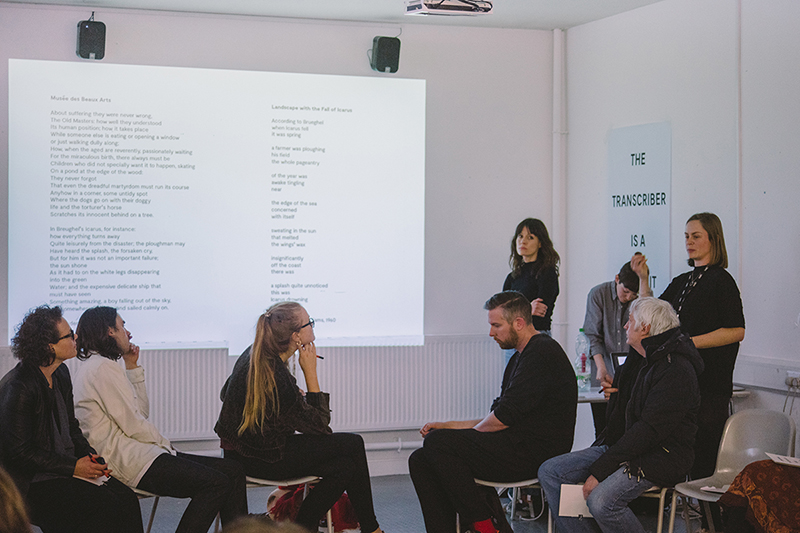
Bec Worth, Cate Rickards and Louise Evans presenting Provocation #1: ‘There is not, and cannot be a neutral transcription system’, at their ‘Original thoughts are prohibited’ workshop. Photo: Gabriela Matuszyk.
Another iteration of the performance as design practice could be observed in the screening of “No Exit”, an algorithmically coded opera from the Design Displacement Group. The multi-screen installation explores issues around labor conditions, efficiency, isolationism, populism in light of Brexit, and the evident fracturing of the European political arena. The overlapping of the parallel projections created simultaneous narratives for the audience to follow. Probing for critique, reflection, and speculation on the current political climate, it was a poignant provocation, especially in the wake of Article 50 being triggered earlier that day. This need for a political examination was reiterated in John Wood’s notes, where he discussed key concepts such as Economies of Scale, and Division of Labor. A performer himself, he tackled these big topics with gentle humour and managed to engage the audience to achieve healthy debate and willing participation during the end of day panel discussion.
NO EXIT 2016 from Design Displacement Group on Vimeo.
With a Shift Simultaneous Realities Collide reiterates the need in design pedagogy to constantly question educational methodologies against emerging modes of communication. It is crucial that assumptions are questioned, ways of teaching examined and new strategies discovered and tested. Using multi-modal techniques as 
a tool to create new narratives, whether it’s editing, transcribing, publishing or archiving, will implicitly lead to a needed diversification. The event, talks, and workshops were all developments in this line of questioning. Projects such as ‘Positioning Practice’, ‘Modes of Criticism’, ‘Scratching the Surface’ distill the importance of writing within the context of pedagogy and onwards into design practices that maintain a criticality. These projects and others like them need to continue in the field of design and should be reflected upon and propagated. Writing is often portrayed as a solitary process, however adopting it as a design practice introduces new capacities to this evolving role. By writing, listening, seeing and questioning, we can continue to critically cultivate and develop a working understanding that challenges the particularities and complexities of contemporary culture through design.
The next event organized by the Graphic Design Educators’ Network will be “Ideas of Revolt” at Sheffield Hallam University, 7–8 September 2017. For more information see www.graphicdesigneducators.network.
Observed
View all
Observed
By Katie Evans & Gabriela Matuszyk
Recent Posts
Mine the $3.1T gap: Workplace gender equity is a growth imperative in an era of uncertainty A new alphabet for a shared lived experience Love Letter to a Garden and 20 years of Design Matters with Debbie Millman ‘The conscience of this country’: How filmmakers are documenting resistance in the age of censorship



